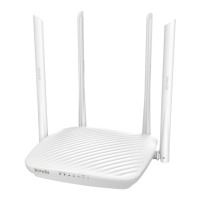By default, the DHCP server of the router is enabled. It is recommended that you retain the
default settings. If you disable the DHCP server, you need to set IP address information on each
device connected to the router, which will probably cause IP address conflicts.
It is recommended that you retain the default DHCP server settings to ensure internet
connectivity.
Parameters
It specifies the LAN IP address of the router, that is, the login address of the router web
UI.
If the Enable is selected, the server assigns one IP address within a specified IP
address range to each device connected to the router.
If the Enable is deselected, no IP address is assigned to the devices connected to
the router (such as laptops and mobile phones). These devices can access the
internet only after IP addresses are manually set on them. Manual IP address
setting is complicated and may easily cause IP conflicts. Generally, it is
recommended that you enable the DHCP server.
It specifies the range of IP addresses that can be assigned to devices connected to the
router.
Preferred/Alternative
DNS Server
It specifies the preferred and alternative DNS servers of devices connected to the
router.
Setting DNS Server Addresses
This function enables you to set DNS server addresses for devices connected to the router. If you do not
configure DNS settings, the DHCP server of the router assigns the default DNS server address (LAN IP address of
the router) to the devices.

